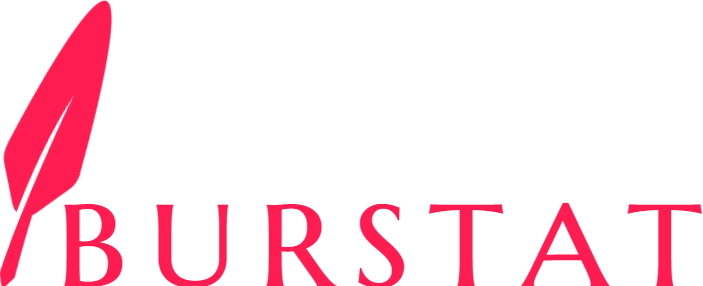Bloomberg
Hershey Is Behind Big Cocoa Trade That Upended N.Y. Markets
(Bloomberg) — One of America’s top chocolate makers is upending the New York cocoa market.Hershey Co. is taking the unusual step of directly sourcing a large amount of cocoa through the ICE Futures U.S. exchange instead of buying beans in the physical market, according to people familiar with the matter who asked not to be named because the deal is private. The massive trade has sent December-delivery futures to a record premium over the next contract. The purchases were so large that they required special permission from the exchange, the people said.The trade comes after top cocoa growers Ivory Coast and Ghana added a hefty premium for their beans in a move they say will boost farmers’ incomes. While most cocoa changes hands via private deals around the world, the purchase through the exchange allows Hershey to obtain cheaper supplies, saving millions. That’s because beans sourced from exchange stockpiles don’t incur the premium, currently about 15% of the futures price.Hershey said it doesn’t discuss details of its buying and hedging activities and that it purchases cocoa from a variety of suppliers and sources to meet its needs. The Pennsylvania-based company said it has long supported initiatives to improve farmer livelihood and that includes Ghana and Ivory Coast’s Living Income Differential, as the $400-a-ton premium is known.“The move by Hershey was smart and a perfectly legitimate use of the futures market,” said Derek Chambers, a former head of cocoa at Sucden and who retired in 2018 after trading for 50 years. “It works for them on many levels, not least in giving them a competitive advantage against other U.S. chocolate makers. It should also ensure that they can buy the cocoa they need at cheap differentials in the months to come, through the futures or commercially.”Chocolate makers usually use cocoa traders and processors as intermediaries when buying beans. The large majority also don’t process their own cocoa, having their beans ground by others or buying cocoa butter — which accounts for about 20% of a milk chocolate bar — and cocoa powder, used to make cookies and ice cream. Hershey processes a large chunk of its beans through Chicago-based Blommer Chocolate Co.Ivory Coast and Ghana, which account for almost 70% of global cocoa production, started charging the premium for beans from the 2020-21 harvest that started in October. That came on top of a quality fee depending on where the cocoa comes from, and in some cases a sustainability surcharge.While many chocolate makers and cocoa processors had initially agreed to pay the high prices, lockdowns from Paris to Los Angeles slashed chocolate demand and now mean they don’t need as much cocoa or need to seek cheaper supplies, said Judy Ganes, president of J. Ganes Consulting.“Hershey’s expectation is that 2020-2021 cocoa purchased within our supply chain since the implementation of the LID in West African countries includes this price premium,” the company said in an emailed statement. “Beans sold prior to the implementation of the LID would not include the premium.”Big DeliveryExchange deliveries have so far reached more than 30,000 metric tons of cocoa, either through the normal delivery process or through alternative settlement mechanisms, which allow buyers and sellers to negotiate in private, according to the people and exchange data. The trade sent December futures — the first to expire after the implementation of the LID — to a premium of more than $250 a metric ton over the March contract.Any position above the limit of 10,000 tons allowed by the exchange requires a so-called hedge exemption, in which the buyer has to prove to the bourse it has a commercial use for the supplies. ICE said it doesn’t comment on market moves or hedge exemptions.Such a large exemption surprised traders after the exchange earlier this year said it faced challenges to grade cocoa that would become part of exchange inventories as quickly as in the past due to Covid-19.“The U.S. futures will remain off balance for the foreseeable future as other companies will almost certainly see the benefits of replicating what Hershey has done and the trade will be reluctant to hold short hedges on the market,” Chambers said. “The volume of cocoa on the exchange cannot be replenished quickly although surplus supplies from at least Ecuador will build up in warehouse over time.”The LID can’t be hedged, making it harder for cocoa processors and chocolate companies to manage risk.The big trade comes after some shippers in Ivory Coast halted cocoa purchases, asking to pay a lower country-quality fee due to slowing demand. In Ghana, there’s also been resistance to paying this fee. That’s created a standoff, with Ghana criticizing companies it says are backtracking on a pledge to pay more for beans.The West African nations still have a lot of cocoa from the current crop to sell, putting them in a vulnerable position, said Ganes, who has followed markets for more than 30 years, having worked at Wall Street giant Merrill Lynch. To try to resolve the standoff, the countries are threatening to suspend sustainability programs by chocolate makers and cocoa processors, a tactic that in the past worked out as companies fear consumer backlash.Ghana Cocoa Board Chief Executive Officer Joseph Boahen Aidoo said companies aren’t following through with their promises. While he didn’t specify any companies, he said he is prepared to “name and shame” firms. He also didn’t call for a suspension of sustainability programs at a World Cocoa Foundation virtual event.Hershey said it continues its “substantial cocoa sustainability work with producer governments on our mutual goals to tackle the root causes of poverty that put youth at risk as well as ending deforestation,” according to a statement. The company added that on top of paying the LID, it’s investing in farmer training to grow more cocoa in less land and helping farmers diversify incomes with measures including growing alternative crops.The move could also have knock on effects in the London market. So far, cocoa stored in New York has been considered more attractive as the London exchange’s warehouses are filled with large piles of 1,000 tons of cocoa from Cameroon, a quality very few processors can use in such large amounts.“Cocoa users in Europe will note the dramatic effect that this action has had and perhaps look to source more cocoa from the London futures in the coming months,” Chambers said. “Perhaps not immediately but almost certainly by December 2021 the value that the futures represents will be compelling.”(Updates with comments from trader starting in fifth paragraph.)For more articles like this, please visit us at bloomberg.comSubscribe now to stay ahead with the most trusted business news source.©2020 Bloomberg L.P.





